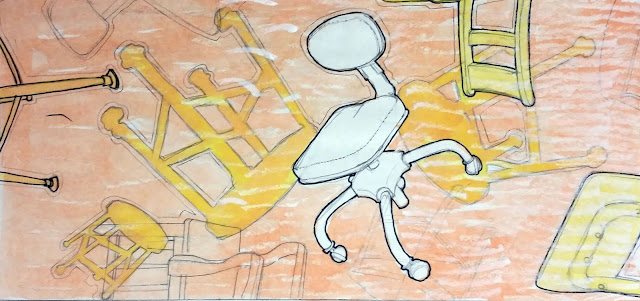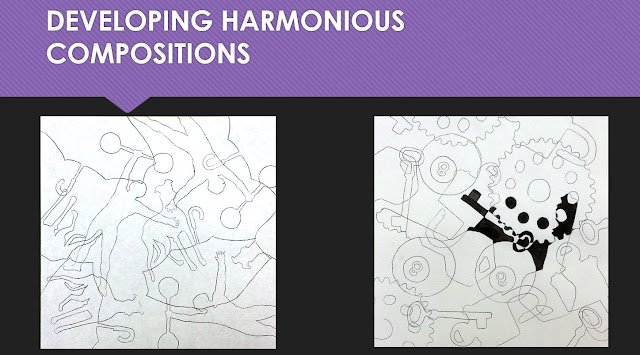WARM UP
Acquire your accordion books and review the first five Art Synectic Triggers that we have explored.
SUBSTITUTE
ISOLATE
CHANGE SCALE
DISTORT
DISGUISE
ISOLATE
CHANGE SCALE
DISTORT
DISGUISE
After reviewing the work you will determine which of your sketches ha the most potential to be developed into a final artwork. You will need to have your selection made at the start of class. Be on time, be prepared, and be smart about your choice. you are going to take your chosen sketch and refine it into a finished drawing.
You will be evaluated using the following rubric:
You will be evaluated using the following rubric:
LESSON FOR THE DAY
The task is a 9x12 pencil drawing based on the example of Art Synectics that you chose from your accordion book. This choice must be made from the most recent 5 sketches you generated. This work will require you to examine your sketch and develop a large final drawing based on the specific Art Synectic trigger represented. For your reference before beginning this drawing you will need to understand the following expectations:
- Your drawing must clearly show the original image altered to highlight the Art Synectic trigger.
- Your drawing must fill the entire picture plane.
- Your drawing must be well crafted and free from unsightly errors
- Your drawing must show evidence of original thought and risk taking.
LESSON FOR THE DAY:
Where are you now?
HOW HAVE YOU ORGANIZED AND DEVELOPED ARTISTIC IDEAS AND WORK?
HOW HAVE YOU DEVELOPED AND REFINED ARTISTIC TECHNIQUES AND WORK FOR PRESENTATION?
You have a composition with:
- 5 different views
- 4 positive chair drawings
- 3 negative chair drawings
- 2 different chairs
- 1 chair of emphasis
- 5 different views
- 4 positive chair drawings
- 3 negative chair drawings
- 2 different chairs
- 1 chair of emphasis
TODAY:
You will begin to apply color to the drawing you composed during last class. The criteria for the color composition are as follows:
- 4 hues
- 3 pen outlines
- 2 pencil outlines
- 1 instance of personal creativity
See the image below as an example for clarification:
You will need to grade yourself based on the following rubric:
Class will revolve around determining where we have finished in this artistic endeavor. You will apply criteria to evaluate your performance and determine where you are now with your finished painting.
You will begin to apply color to the drawing you composed during last class. The criteria for the color composition are as follows:
- 4 hues
- 3 pen outlines
- 2 pencil outlines
- 1 instance of personal creativity
See the image below as an example for clarification:
You will need to grade yourself based on the following rubric:
Class will revolve around determining where we have finished in this artistic endeavor. You will apply criteria to evaluate your performance and determine where you are now with your finished painting.
You will need to grade yourself based on the following rubric:
Class will revolve around determining where we have finished in this artistic endeavor. You will apply criteria to evaluate your performance and determine where you are now with your finished painting.
AFTER PARTY
Towards the end of our session we will pause for LARGE group critique of the works produced.
We will, at this time, use the seesaw app to upload images of our artwork and continue building a digital portfolio. If you have not yet downloaded the seesaw app please do so as soon as possible.
Remember to come prepared for class with a sharpened pencil.
Mr. Voelker
We will, at this time, use the seesaw app to upload images of our artwork and continue building a digital portfolio. If you have not yet downloaded the seesaw app please do so as soon as possible.
Remember to come prepared for class with a sharpened pencil.
Mr. Voelker









































